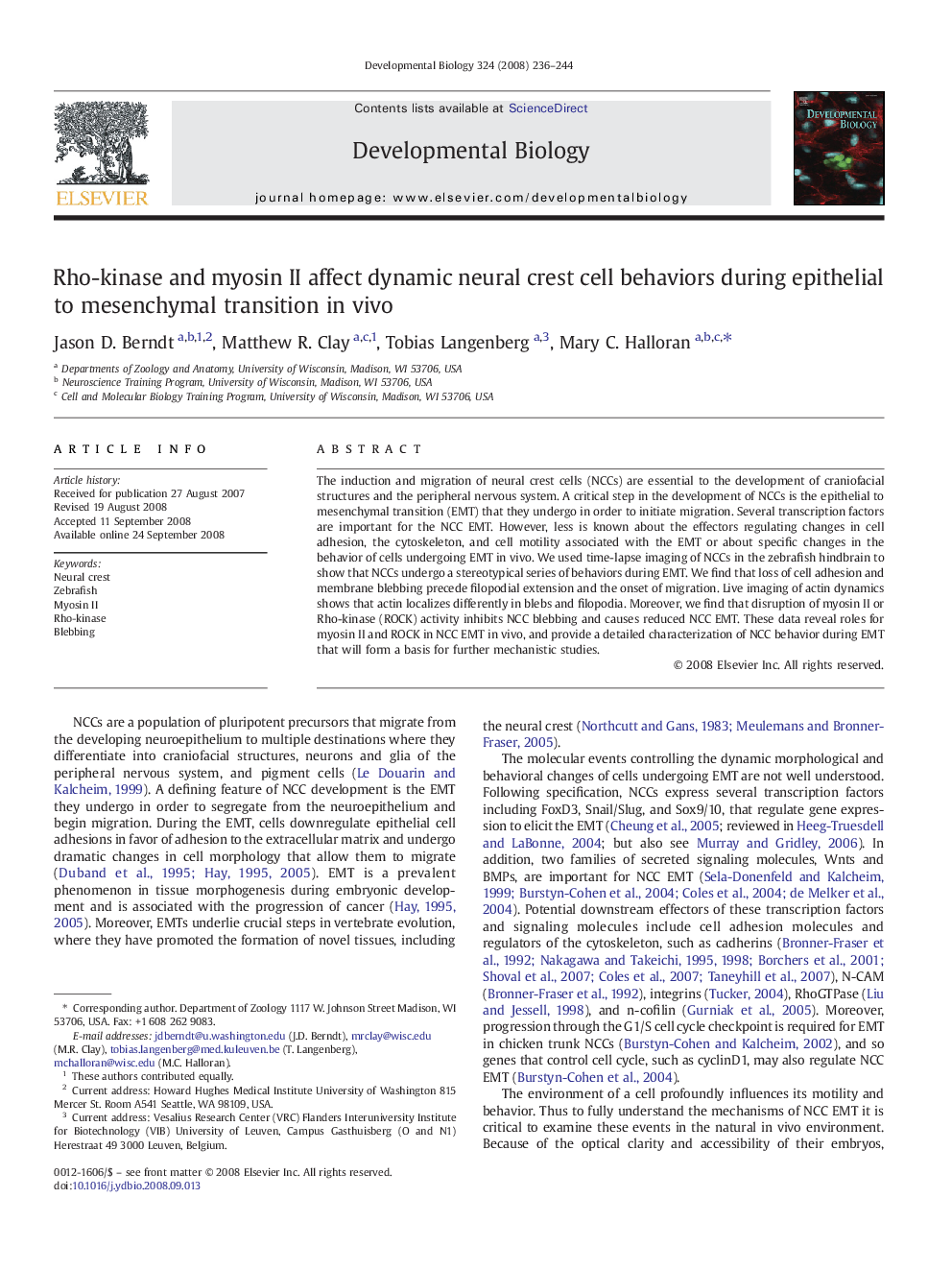| Article ID | Journal | Published Year | Pages | File Type |
|---|---|---|---|---|
| 2174481 | Developmental Biology | 2008 | 9 Pages |
The induction and migration of neural crest cells (NCCs) are essential to the development of craniofacial structures and the peripheral nervous system. A critical step in the development of NCCs is the epithelial to mesenchymal transition (EMT) that they undergo in order to initiate migration. Several transcription factors are important for the NCC EMT. However, less is known about the effectors regulating changes in cell adhesion, the cytoskeleton, and cell motility associated with the EMT or about specific changes in the behavior of cells undergoing EMT in vivo. We used time-lapse imaging of NCCs in the zebrafish hindbrain to show that NCCs undergo a stereotypical series of behaviors during EMT. We find that loss of cell adhesion and membrane blebbing precede filopodial extension and the onset of migration. Live imaging of actin dynamics shows that actin localizes differently in blebs and filopodia. Moreover, we find that disruption of myosin II or Rho-kinase (ROCK) activity inhibits NCC blebbing and causes reduced NCC EMT. These data reveal roles for myosin II and ROCK in NCC EMT in vivo, and provide a detailed characterization of NCC behavior during EMT that will form a basis for further mechanistic studies.
